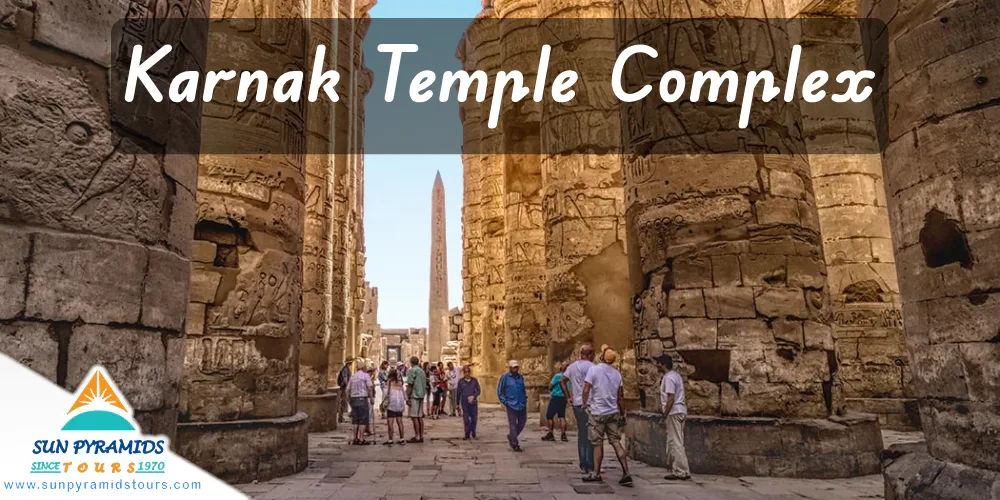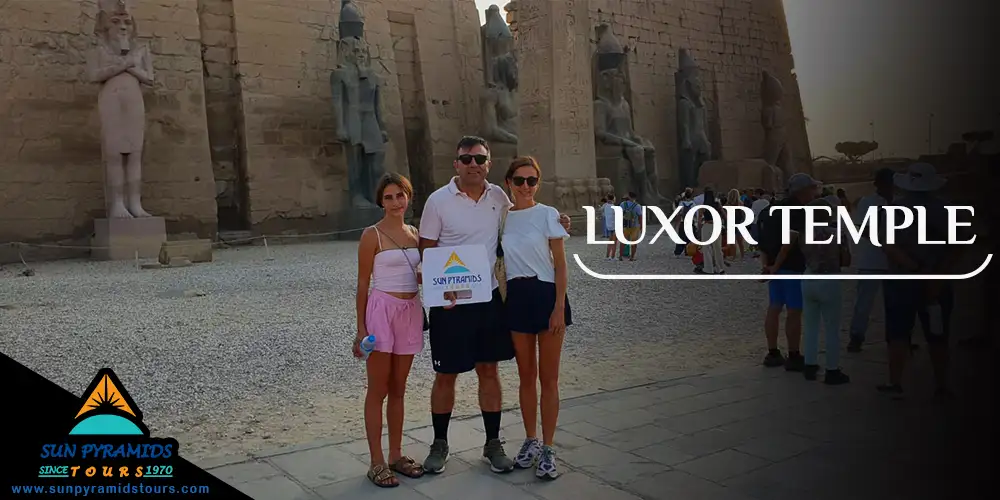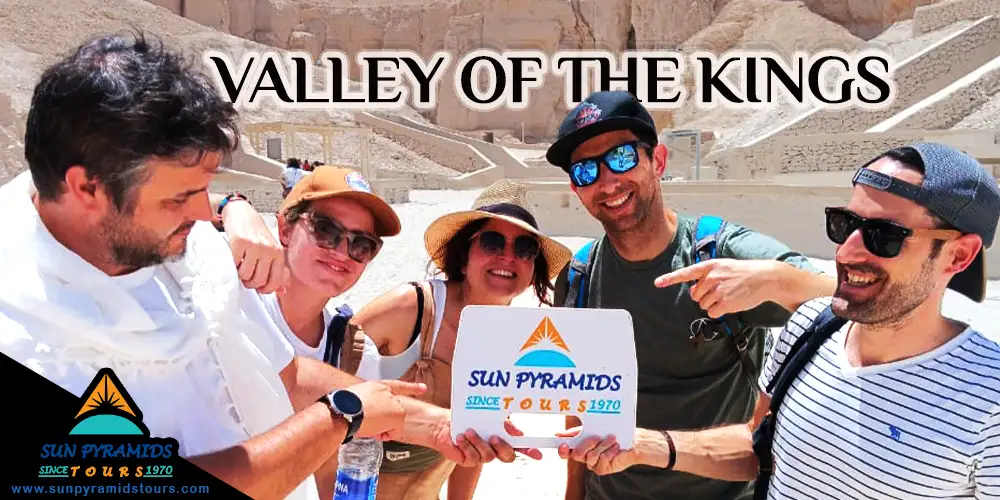Abydos-Tempel
Abydoss hat sich zu einem bedeutenden archäologischen Schatz in Ägypten entwickelt. Hier befindet sich die königliche Grabstätte aus der vordynastischen Zeit, die faszinierende Verbindungen zu Sumerien aufgedeckt hat. Darüber hinaus beherbergt es das Osireion, eine geheimnisvolle unterirdische Kammer, die mit dem Nil verbunden ist und aus massiven Blöcken besteht. Der architektonische Stil dieser Blöcke wird nur vom Taltempel in Gizeh erreicht. Später wurde an dieser Stelle der Tempel von Sethos I. aus der sechsten Dynastie errichtet, der zweifellos aus einer früheren Zeit stammt. Wo befindet sich der Abydos-Tempel und wie kommt man dorthin? Der Abydos-Tempel befindet sich in der Stadt Abydos, die einst eine bedeutende heilige Stadt und eine Nekropole der ersten ägyptischen Könige war. Abydos war auch ein Pilgerzentrum zur Verehrung von Osiris, dem Gott des Jenseits, von dem man annahm, dass er dort begraben liegt. Um Abydos von Luxor aus zu erreichen, können Sie ein Privatauto oder ein Taxi nehmen, was etwa zweieinhalb Stunden dauert. Alternativ können Sie bei Sun Pyramids Tours an einer geführten Tour teilnehmen, die Transport und Eintrittsgelder beinhaltet. Kontaktieren Sie uns für weitere Informationen. Sie können Ihren Besuch in Abydos auch mit einem anderen nahegelegenen Tempel wie Dendera oder Karnak kombinieren . Der Tempel von Sethos I. (1.307-1.291 v. Chr.) (Das Haus von Millionen Jahren) Es wird angenommen, dass es gegen Ende der Herrschaft Sethos erbaut wurde. Sethos I. , der zweite König der 19. Dynastie, war der Sohn von Ramses I. und Königin Sitre. Er versöhnte sich mit den Hethitern, die zum mächtigsten Staat in der Region aufstiegen. Sethos I. und sein Erbe Ramses II. führten einen Feldzug gegen Kadesch. In Karnak vollendete er den Plan seines Vaters, indem er den Hof zwischen dem zweiten und dritten Turm in eine riesige Säulenhalle umwandelte. Er baute seinen riesigen Leichenkomplex in Abydos. Das berühmte Bauwerk, das heute steht, wird oft als der Große Tempel von Abydos bezeichnet. Die erhöhten Reliefs in diesem prächtigen Tempel gehören zu den schönsten in ganz Ägypten. Dieser Tempel verfügt über ein einzigartiges Design, das einem umgekehrten „L“ ähnelt. Es enthält auch die umfassendste Liste von Königen und Göttern. Der Tempel beherbergt sieben Heiligtümer, die sieben Göttern gewidmet sind: Osiris, Isis, Horus, Amon Ra, Ra HorAkhty, Ptah und Seti I. als vergötterter König. In diesem Tempel findet man die am besten erhaltenen gemalten Reliefs und Texte aus der 18. Dynastie. Zur Verehrung des Pharaos und der Hauptgottheiten wurden sieben Kapellen errichtet. Auf der Rückseite des Tempels befindet sich ein mysteriöses Bauwerk, das als „Osirion“ bekannt ist und vermutlich mit der Verehrung des Osiris in Verbindung gebracht wird. Wahrscheinlich erstreckte sich von diesen Kammern aus das große Hypogäum zur Feier der Osiris-Mysterien, das von Merenptah errichtet wurde. Der Tempel von Sethos I. erlangt auch wegen seiner einzigartigen Schnitzereien, die an einem seiner Deckenbalken entdeckt wurden, einen guten Ruf. Aufgrund ihrer auffälligen Ähnlichkeit mit zeitgenössischen Fahrzeugen haben diese Gravuren in der Vergangenheit großes Interesse erregt. Es wurde jedoch vermutet, dass sie das Ergebnis überlagerter Hieroglyphen sein könnten, die trotz ihrer Seltenheit bei der Untersuchung des restlichen Balkens plausibel erscheinen. Der Bau des Tempels von Sethos I. erfolgte erheblich später als der des Osireion: Es wird angenommen, dass Sethos I. zum Bau an dieser Stelle geführt wurde und dass er die Richtung des Tempels nach der Entdeckung des Osireion anpasste. Die Ausrichtung der beiden Tempel lässt jedoch darauf schließen, dass er wahrscheinlich von der Existenz des Osireion wusste, als er mit dem Bau seines Tempels begann. Das Osireion (Strabos Brunnen, der Brunnen von Abydoss) Als Sethos I. mit der Suche nach einem Standort für seinen Tempel begann, wurde er zu einer Stelle nördlich von Luxor in der Nilkurve geführt. Hier begann er mit der Ausgrabung des Fundaments für seinen Tempel. Dabei stieß er auf das Osireion, den antiken Tempel des Osiris. Ob er sich der Existenz des Osireion bewusst war, bleibt ein Rätsel, aber als er auf dem Weg seines neuen Tempels auf diesen alten Tempel traf, richtete er seinen neuen Tempel nach links um. Dieser Tempel ist der einzige in Ägypten, der eine „L“-Kurve hat. Das Bauwerk weist erhebliche architektonische Unterschiede zum darüber liegenden Tempel auf und ist vermutlich erheblich älter. Es weist mehrere Ähnlichkeiten mit dem „Taltempel“ in Gizeh auf, der ebenfalls als Bauwerk der frühen Dynastie gilt. In diesem Zusammenhang ist es vielleicht bemerkenswert, dass der Tempel Osireion Osiris geweiht ist, während der „Taltempel“ in Gizeh mit Isis verbunden ist. Derzeit fehlen uns Hinweise zum Baudatum. Das Design, die Größe der Materialien und das völlige Fehlen von Verzierungen lassen jedoch auf einen sehr alten Ursprung schließen. Bisher galt der sogenannte Sphinx-Tempel von Gizeh stets als eines der ältesten Bauwerke Ägyptens. Es ist zeitgleich mit der Chefren-Pyramide ... Aufgrund seiner ähnlichen Zusammensetzung, aber viel größeren Materialien weist das Abydos-Reservoir einen noch archaischeren Charakter auf, und es wäre nicht überraschend, wenn es sich dabei um das älteste Bauwerk Ägyptens handeln würde. Wer war Dorothy Eady (Omm Sety) und welche Verbindung hatte sie zum Abydos-Tempel? Eine der faszinierendsten Geschichten über den Abydos-Tempel ist die von Dorothy Eady (1904 – 1981), auch bekannt als Omm Sety oder Om Seti, einer britischen Antiquitätenverwalterin und Volkskundlerin. Sie diente als Wächterin des Abydos-Tempels von Sethos I. und arbeitete als Zeichnerin für die Abteilung für ägyptische Altertümer. Berühmtheit erlangte sie durch ihre Überzeugung, in einem früheren Leben Priesterin im alten Ägypten gewesen zu sein, und durch ihre umfangreichen historischen Forschungen, die sie in Abydos durchführte. Ihr Leben und ihre Beiträge standen im Mittelpunkt zahlreicher Artikel, Fernsehdokumentationen und biografischer Werke. Laut John A. Wilson, dem verstorbenen Leiter des Oriental Institute und von seinen Kollegen als „Dekan der amerikanischen Ägyptologie“ angesehen, glaubte er, dass Omm Sety Anerkennung als „verantwortungsbewusster Gelehrter“ verdiente. Sie diente als Quelle für die zeitgenössische Wissenschaft, die darauf abzielte zu verstehen, wie traditionelle alte religiöse Bräuche bis in die Gegenwart erhalten geblieben sind und sich als „Volksbräuche“ manifestiert haben, die von modernen ägyptischen Kopten und Muslimen beobachtet werden. Im Gegensatz zu anderen, die behaupteten, wiedergeborene Wesen aus dem alten Ägypten zu sein, wurde ihr von Ägyptologen Respekt entgegengebracht. Während niemand die von ihr beschriebenen Phänomene öffentlich befürwortete, stellte niemand ihre Ehrlichkeit in Frage, und viele nutzten ihre Erkenntnisse über das vergangene und gegenwärtige Ägypten als glaubwürdiges Quellenmaterial. Tempel Ramses II Der benachbarte Tempel von Ramses II. war zwar kleiner und einfacher gestaltet, konnte sich aber mit einer bemerkenswerten Reihe historischer Szenen auf der Außenseite rühmen, die seine Errungenschaften feierten, während die unteren Teile noch intakt waren. Die Außenseite des Tempels war mit Darstellungen der Schlacht von Kadesch geschmückt. Hier stand einst eine Liste von Pharaonen, ähnlich der von Sethos I.; Die Fragmente wurden jedoch vom französischen Konsul erworben und an das British Museum verkauft. In den oberen beiden Reihen der Liste sind die Namen der Könige aufgeführt, während in der dritten Reihe der Thronname von Ramses II. wiederholt wird. Wie sind die Öffnungszeiten des Abydos-Tempels? Die Öffnungszeiten des Abydos-Tempels sind: Täglich von 7.00 bis 18.00 Uhr Warum buche ich bei Sun Pyramids Tours? 1) Fachwissen und Erfahrung: Sun Pyramids Tours verfügt über 53 Jahre Erfahrung in der Reise- und Tourismusbranche. 2) Maßgeschneiderte Reiserouten: Sun Pyramids Tours bietet maßgeschneiderte Reiserouten, die Ihren Vorlieben entsprechen. Egal, ob Sie sich für historische Stätten, kulturelle Eintauchen oder Abenteueraktivitäten interessieren, wir können eine Tour zusammenstellen, die Ihren Interessen entspricht. 3) Lokale Verbindungen und Insider-Zugang: Sun Pyramids Tours bietet Ihnen einzigartige Möglichkeiten und Insider-Zugang zu Attraktionen und Erlebnissen, die für unabhängige Reisende möglicherweise nicht leicht zugänglich sind. 4) Problemlose Planung: Mit Sun Pyramids Tours können Sie Ihre Reise stressfrei planen. Wir kümmern uns um die gesamte Logistik, einschließlich Unterkunft, Transport und Führungen, zu wettbewerbsfähigen Preisen … Entspannen Sie sich und genießen Sie Ihren Urlaub, ohne sich um die Details kümmern zu müssen. 5) Kundenzufriedenheit: Sun Pyramids Tours ist stolz darauf, exzellenten Kundenservice zu bieten und die Kundenzufriedenheit sicherzustellen. Sie sind bestrebt, Ihre Erwartungen zu erfüllen und zu übertreffen, um Ihre Reise angenehm und unvergesslich zu machen. Fügen Sie Trip Advisor-Bewertungen, Facebook-Seitenbewertungen usw. hinzu. 6) Sicherheit: Sun Pyramids Tours legt großen Wert auf die Sicherheit seiner Gäste. Wir arbeiten mit vertrauenswürdigen Partnern zusammen, halten uns an Sicherheitsrichtlinien und unterstützen Sie während Ihrer gesamten Reise, um ein sicheres und komfortables Reiseerlebnis zu gewährleisten.
Mehr lesen



